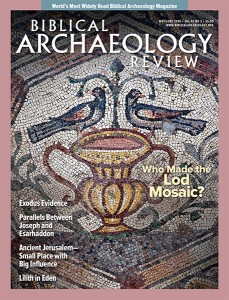
In the previous BAR, we discussed at some length whether the inscribed ivory pomegranate was authentic, and we concluded that it was.a We will not repeat that here. This article will be confined to the reasons we are confident that it is authentic.
But first a note on authenticity. To be precise, we should say we are confident it is not a forgery—for no inscription can ever be proven to be authentic. Or to put it slightly differently, an inscription can never be proven to be authentic. There is always some as-yet unknown test that would unmask the forger. Even an object excavated in a professional excavation can be a forgery; some worker, for example, may have salted the forgery in an excavation. Or it is even possible that the archaeologist who heads the excavation is a forger who planted the forged object in an excavation square to gain fame.
But let’s be reasonable. There is always a technical possibility that an excavated inscription is a forgery. But that’s highly, highly, highly unlikely. So we will speak loosely—and when an object is shown beyond a reasonable doubt not to be a forgery—we will say that it is authentic even though there is this remote chance that it is a forgery.
Already a library member? Log in here.
Institution user? Log in with your IP address.

